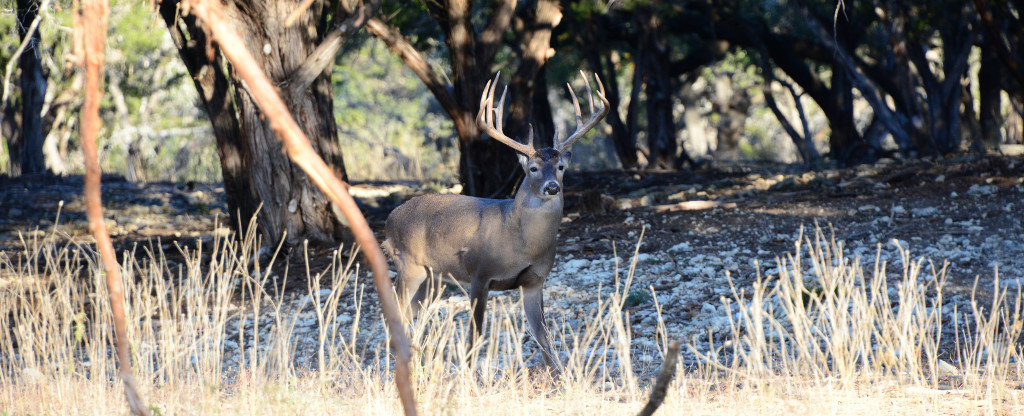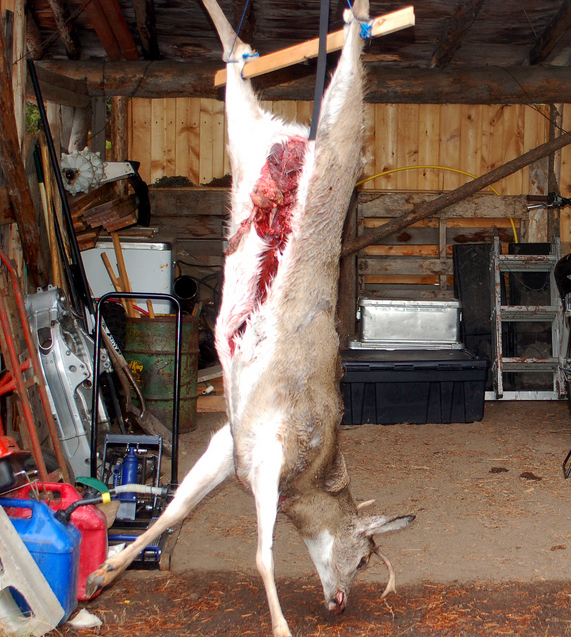
Like those from most other deer, whitetail deer antlers are prized by hunters and many other outdoor enthusiasts. In fact, there's nothing quite like walking through a forest or field and stumbling upon a pair of shed antlers—except perhaps shooting a trophy with that same huge rack.
Whitetail sheds are so popular that there's actually quite a lively market for them, with top quality trophy class antlers often selling to collectors for well over $500. There's also a decent market for smaller or older sheds. Numerous chandelier and furniture makers and other craftsmen often build a variety of objects with the help of antlers (see this antler table lamp for example).
Still, there are a lot of things that many people don't know about antlers, which is why today I'm going to present you with some whitetail deer antlers facts to hopefully answer any questions and provide you with all you could ever need to know about these fascinating body parts.
Before getting into the info about how, when and why the antlers grow and fall off, first we'll look quickly at the various parts of the antlers.
Examining the Parts of Whitetail Deer Antlers
Pedicle:
The point where the antler meets the bones of the skull; the pedicle is where the antler grows from.
Burr:
The rougher part at the base of the antler located just above the pedicle and hair.
Main Beam:
The central part of the antlers where the points rise from.
Brow Tine:
The first point of the antler located just above the burr. The brow tine is generally the smallest of the typical points.
Bay Antler:
The first point above the brow tine (second point overall).
Royal Antler:
The third division of the antlers located just above the bay antler.
Surroyal Antler:
The fourth point on the antlers located just in front of the fork (or palm).
Fork or Palm:
The point where the main beam divides into points near the top of the antler; if the beam only divides into two points, it is referred to as a fork, while it is referred to as a palm if it divides into more than two points.
Crown Tines:
The points located above the fork or palm.
Rack:
The full set of antlers is typically referred to as a rack.
Why Do Deer Grow Antlers?
On whitetails (and most other deer species), the main purpose of the antlers is related to reproduction. The bucks mostly use them as weapons in fighting one another over to see who gets to mate with the nearby does. Of course, whitetails aren't stupid and often a buck with smaller antlers will avoid fighting one with much larger antlers as it can already see that its outmatched.
How and When Whitetail Deer Antlers Grow
In most cases, whitetails start growing their antlers in early springtime. Many whitetail antlers begin growing around March or April, but the exact time can vary based on location, climate, weather, amount of available food and a variety of other factors.
When the antlers first start to grow from the pedicle, they start out growing straight upwards before beginning to curve and grow towards the front as the main beam begins to split off from the brow tine. As the main beam continues to grow forwards, each of the points eventually begins to split off from it and grow upwards.
The antlers are covered with a layer of hair and skin known as velvet as they grow, which helps to ensure that they receive blood and nutrients during this important period. After the antlers reach their full height sometime around mid-summer, the velvet then begins to dry out and fall off. To speed up the process, deer generally rub their antlers on trees to help scrape the velvet off.
Although the antlers will eventually end up incredibly hard and strong, they are actually quite weak and soft when they first begin growing, and as such, cannot be used during the first few months.
When Do Whitetail Antlers Fall Off?
The question of when the antlers fall off is a bit more difficult to pinpoint than when the antlers start growing. Again, it depends on a variety of factors, including weather, location and the health of the deer. Nonetheless, the main determining factor really is testosterone.
When the does are in season, the bucks begin the rut, during which time their testosterone levels see a huge spike. However, once the majority of does in the area have been bred, the bucks' testosterone levels quickly see a huge drop, which results in their antlers falling off.
Of course, this all depends on how many available does are in the area and how long it takes for the majority of them to be bred. This is why some whitetails have been known to hold onto their antlers until as late as February in areas where food is abundant and the climate is milder. On the other hand, in the more Northern areas or places where the habitat is not so conducive, most whitetail bucks will shed their antlers sometime between the end of November and January.
How Is the Size of the Antlers Determined?
There are three main factors in play in determining the size of deer antlers: age, genetics and nutrition.
Age is the most obvious factor, as a deer's antlers generally continue growing in size each year until they reach their maximum size at somewhere between four and seven years.
Nutrition is also quite important, as the more food and higher quality food a deer is able to consume, the more energy it can dedicate to growing its horns.
Finally, DNA also plays a role in the size of whitetail deer antlers, although the extent of it has yet to be fully determined.
Other Interesting Facts
- Deer antlers are one of the quickest growing types of tissue in the world, capable of growing as much as 1/2 inch per day
- Injuries to a deer's hind leg often causes the antler on the opposite site to permanently grow stunted or deformed
- If a deer's pedicle was surgically transplanted to another part of its body, it would begin growing an antler from that place
When you actually stop and consider the fact that they grow those huge racks each and every year, the more you begin to realize that whitetail deer antlers really are some of the most fascinating gifts from Mother Nature. Maybe now that you know a bit more about them, you'll have a whole new appreciation for these amazing objects.



